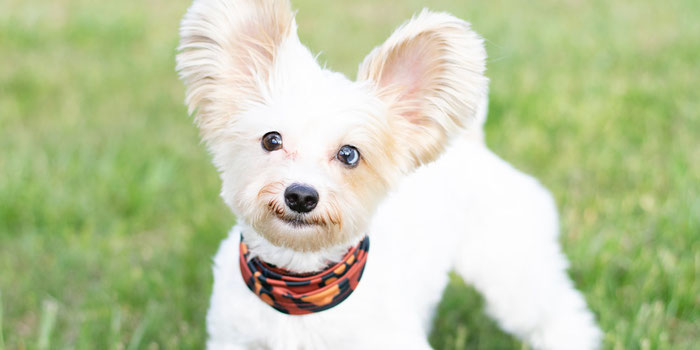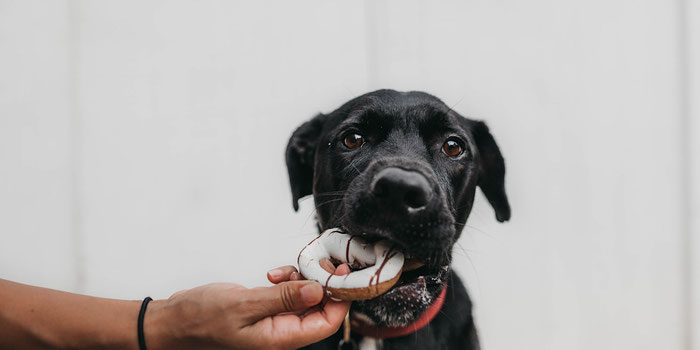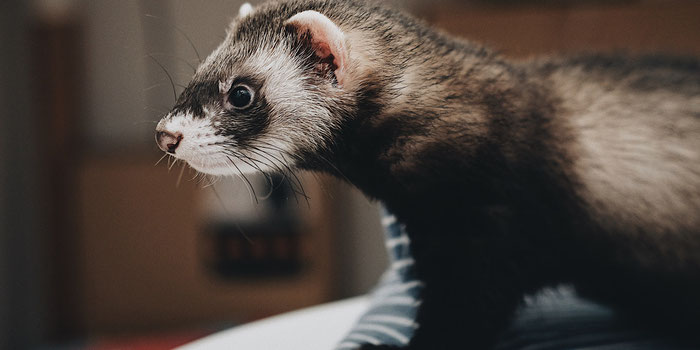Nobody wants it to happen - a pet emergency.
Whether you're caring for your own pets or pet sitting others', preparedness is key to saving a life.
So, from a vet tech, here are some tips on how to be prepared, what to check, and what to do in a pet emergency.
be prepared: details to have on hand
If pet sitting, have the pet owners' contact info and emergency contact info on hand, and the regular veterinarian and emergency vet info, both the hospital address and phone number and/or house call vet and phone number.
Get all pets' documents with last recorded weight, medical records, vaccination history, background, and all current medications and supplements.
If any pets have any medical conditions, then be aware of potential symptoms and complications to watch out for.
Know where the first aid kit and medicines are kept.
A veterinarian may instruct you to treat minor emergencies at home if possible.
For example, if a pet has an allergic reaction, you may have to give an antihistamine like diphenhydramine (benadryl).
If a pet has swallowed a poison, you may have to give hydrogen peroxide to induce vomiting.

Have a transport plan in place, such as a transport method and a route planned out, and transport devices such as leash, carrier, and/or muzzle.
Logistics are stressful to figure out in an emergency so the more you know ahead of time, the better.
Ensure there is a payment plan established for the vet - whether it's an open account at the vet, invoicing or direct payment, or a pet insurance plan.
This is very important because most hospitals cannot start any treatment at all without payment authorization and lives can be lost this way.
It's also a good idea to have the pet owner sign a release of treatment form because if it's not your pet, sometimes they also can't administer treatment without authorization from the owner.
Always consult with the pet owner and/or veterinarian before administering any type of medication.

remain alert: know the basics
Get to know the pets and pay attention their daily behaviors, attitude, personality and communication styles.
Remain vigilant to watch out for even the most subtle signs of unusual behaviors or activities.
Sometimes a malady is obvious, such as a limp or a wound, but some pets will instinctively behave like their wild ancestors, by remaining as stoic as possible, and trying to hide any weakness, illness or injury.
environmental toxins
It's important to be aware of household and environmental hazards, toxins or poisons to avoid any potential problems.
Many common people foods are dangerous and even toxic to pets such as garlic, chives, onions, onion powder, grapes, raisins, fruit pits and seeds, avocados, chocolate, walnuts, macadamia nuts, salt, caffeine, candy, alcohol, dough, hops, and potato and tomato stems — go here for more info on foods to avoid.
Since every individual's metabolism is different, a bite of something may not hurt one, but may be fatal to another.
Many plants are poisonous to pets so watch for any chewing or grazing behaviors.
Sometimes just a single leaf or flower can cause a fatal toxicity poisoning.

chewing and grazing
When pet sitting or supervising pets, watch for chewing or biting behaviors to prevent any foreign objects from being bitten or swallowed.
If necessary, move environmental dangers and temptations out of reach like loose strings, sewing needles, small plastic objects, electrical cords or wires, or anything else that any curious cat or dog could potentially ingest.
Supervise dogs when they're playing with or chewing edible items such as bones, to be sure they're not chewing off and ingesting small splinters, as these can cause internal punctures.
Additionally, when caring for pets while house sitting, animals often display minor destructive behaviors due to anxiety that their people are away, so even if the pet owner tells you they don't normally do this or chew that, always remain vigilant because it's possibly that they may behave abnormally while they're getting used to you living in their space.

eating too fast
Keep a very watchful eye on medium to large and especially large dogs so they don't eat too much or too fast.
When dogs eat their meals too fast, it can cause gastric dilation-volvulus, or bloat, which means gases cause the stomach to swell like a balloon, sometimes causing it to twist on itself, and this is often fatal within just hours.
Symptoms to watch for are a distended abdomen, extreme uncomfortability such as a hunched posture or restlessness, attempting to vomit but unable, and anxiousness or whining.
This is an immediate emergency because the second it starts, blood flow is comprised and tissue can die.
If you have a fast eater, slow them down by offering their meals in small increments, or feed them smaller meals throughout the day instead of one or two large ones, or try a puzzle feeder, which makes it harder to access all the food at once.

assess vital signs
To take your care a step further, you can check pets' vital signs for irregularities.
There are 5 basic things to check: TPR (temperature, pulse, respiration), CRT (capillary refill time), and hydration status.
If any are outside the normal limits, it may be concerning.
temperature
Normal temperature for dogs and cats is 101.5 Fahrenheit plus or minus 1 degree, so anywhere within 100.5 to 102.5 is normal.
Below 100 or above 103 is a concern.
pulse
Normal pulse for dogs is 60-160 beats per minute.
The larger the dog, the slower the heart rate, and the smaller the dog, the faster.
Normal for cats is 160-240 beats per minute.
To check the pulse, feel the heart through the chest, or feel the femoral artery on the inside of a back leg.
Count the beats for 15 seconds and multiply by 4.
respiration
Normal respiratory rate for dogs is 10-30 breaths per minute and cats is 20-30.
To get the rate, watch the chest as the pet breathes in and out.
Count how many times the chest expands with a breath for 15 seconds and multiply by 4.
mucous membranes
Normal capillary refill time for dogs and cats is less than 2 seconds.
To check, hold up the top lip and press a finger onto the pet's gums until they go from pink to white than fast release.
Immediately watch how long they take to go from white to pink.
Anything longer than 2 seconds could mean poor circulation, oxygenation, or hemorrhage.
If the gums are any color other than pink - such as white, blue, yellow or brick red - these are all emergencies.
hydration
To check the hydration level, pinch skin between the shoulder blades, lift up like making a tent and fast release.
Immediately watch if the skin snaps back within 1 second.
If it takes more then 1 second, or stays in a tent shape, the pet is dehydrated.

determine urgency
First, access the level of care needed to decide if the issue be remedied at home or if you need to go to the hospital.
non-emergent:
Minor situations may not be life threatening may still require veterinary care to prevent something going from bad to worse, such as any kind of infection or wound, broken nails, hot spots, or anything else that is concerning you or the pet.
emergency:
Common emergencies that require immediate attention can be any one or more of the following: trauma, poisoning, seizures, foreign object ingestion, restlessness or panting, severe pain or vocalizing, difficulty breathing, extreme lethargy, dizziness, weakness, collapsing, inability to stand, difficulty urinating, not eating or drinking in 24 hours, repeated vomiting or diarrhea, and any symptoms of bloat as described above.
When in doubt, ask.
Always consult a veterinarian for any medical advice, especially in any emergency situation.

take action: what to do
If it's an emergency, contact the pet owner, if unreachable then the emergency contact, then the regular vet, if unreachable then the emergency vet.
Always phone the ER to let them know you’re en route so they can be prepared with staff and equipment to receive you.
Emergency hospitals will divert attention and resources to the most critical cases.
"Go slow to go fast" is a popular saying in emergency veterinary medicine which means to take things one step at a time.
If you get flustered and panicked, you will skip and forget things, causing delay.
So, breathe, focus and do one thing at a time.
Grab the carrier, grab the pet, grab the house keys, grab the car keys.
Save extra time wasted making hasty, preventable mistakes.

Most importantly, remain calm and soothe the pet during their time of stress.
The pet will read your energy and if you’re panicked, it will frighten, stress them and worsen their condition, so try to remain as calm and reassuring as possible, for both of you.
Lastly, breathe.
By reading this advice, you have already taken a smart step by educating yourself so that if or when the time comes, you will be prepared to give your best effort and care to get your pet the help it needs and you may save a life!
When you use TrustedHousesitters to house sit, you can access their 24/7 vet advice line anytime you need with just one click with any pet concerns, questions, or problems.
Use my referral code to get a discount at TrustedHousesitters!









